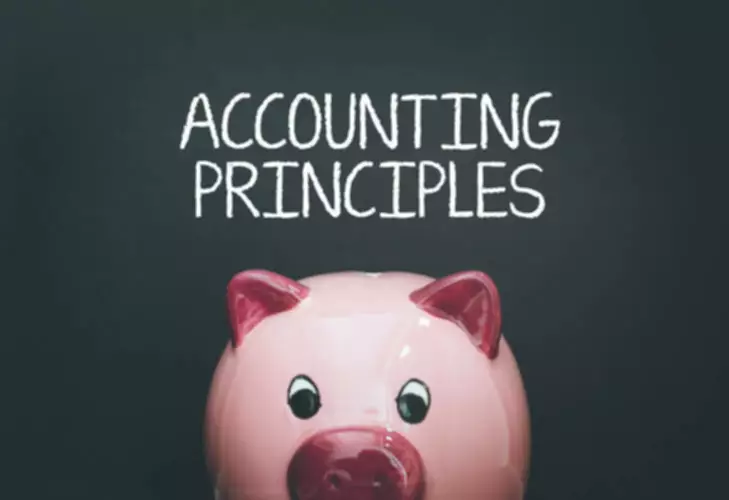Content

In the year the business use drops to 50% or less, you include the recapture amount as ordinary income in Part IV of Form 4797. You also increase the basis of the property by the recapture amount. Recovery periods for property are discussed under Which Recovery Period Applies? To figure taxable income (or loss) from the active conduct by an S corporation of any trade or business, you total the net income and losses from all trades or businesses actively conducted by the S corporation during the year.
- Both acquisition and placed-in-service dates will require a detailed review of the facts and circumstances to make sure the appropriate bonus depreciation allowance is claimed.
- Rental property depreciation is a basic accounting principle that allows you to deduct the cost of a rental property over a set period of time.
- You can elect to recover all or part of the cost of certain qualifying property, up to a limit, by deducting it in the year you place the property in service.
- In these cases, only the portion of the price that is attributed to the building is depreciable.
- Last year, in July, you bought and placed in service in your business a new item of 7-year property.
Real estate investors who continue to improve their properties can continually adjust their cost basis as they go. An operating expense is a cost required as part of day-to-day business. A capital expense is a cost you incur to create future benefits. To qualify as a capital expense, an item purchased for https://www.bookstime.com/ your rental property must have a life expectancy of more than 1 year. Under the rules of the MACRS framework, most taxpayers will use GDS. According to its rules, the recovery period for residential rental properties is 27.5 years, and the recovery period for commercial rental properties is 39 years.
Need Business Insurance?
These property classes are also listed under column (a) in Section B of Part III of Form 4562. For detailed information on property classes, see Appendix B, Table of Class Lives and Recovery Periods, in this publication. For certain specified plants bearing fruits and nuts planted or grafted after December 31, 2022, and before January 1, 2024, you can elect to claim an 80% special depreciation allowance. The section 179 deduction limits apply both to the partnership and to each partner. The partnership determines its section 179 deduction subject to the limits.
What are examples of 5 year property for depreciation?
5-year property: vehicles, computer equipment, office machinery, cattle, and appliances used in a residential rental property. 7-year property: office furniture and fixtures. 10-year property: water transportation equipment and some agricultural buildings.
It’s important that you (or your accountant) keep capital asset records that include the amount of accumulated depreciation you’ve claimed for each asset over the years, so you can easily compute the adjusted basis when the need arises. Bonus depreciation has been changed for qualified assets acquired and placed in service after September 27, 2017. The old rules of 50% bonus depreciation still apply for qualified assets acquired before September 28, 2017.
What is Commercial Property and Real Estate Depreciation?
April is in the second quarter of the year, so you multiply $1,368 by 37.5% (0.375) to get your depreciation deduction of $513 for 2022. You use an item of listed property 50% of the time to manage your investments. https://www.bookstime.com/articles/depreciable-property You also use the item of listed property 40% of the time in your part-time consumer research business. Your item of listed property is listed property because it is not used at a regular business establishment.

Once the useful time frame of the property is determined, you can use a formula to calculate the amount of value lost due to depreciation each year and claim the deduction on your taxes. While this article will walk you through the basics, you should ask your tax adviser any questions you have on your specific situation. The grand total of your depreciation deductions are calculated on Line 22, and then carried over to the appropriate Schedule C (or other form). If you (and your spouse, if filing jointly) are filing more than one Form 4562, you should use one of the forms as a «master» and complete Part I on that form only.
Example of Depreciable Property
There are also special rules and limits for depreciation of listed property, including automobiles. Computers and related peripheral equipment are not included as listed property. For more information, refer to Publication 946, How to Depreciate Property. Depreciable property can also include the cost of any improvements you make to an asset, which is not to be confused with maintenance or repairs.
Therefore, you can depreciate that improvement as separate property under MACRS if it is the type of property that otherwise qualifies for MACRS depreciation. For more information about improvements, see How Do You Treat Repairs and Improvements, later, and Additions and Improvements under Which Recovery Period Applies? You bought a home and used it as your personal home several years before you converted it to rental property. Although its specific use was personal and no depreciation was allowable, you placed the home in service when you began using it as your home.
Definition of Depreciable Asset
You can carry over to 2023 a 2022 deduction attributable to qualified section 179 real property that you placed in service during the tax year and that you elected to expense but were unable to take because of the business income limitation. Thus, the amount of any 2022 disallowed section 179 expense deduction attributable to qualified section 179 real property will be reported on line 13 of Form 4562. Any cost not deductible in 1 year under section 179 because of this limit can be carried to the next year. Special rules apply to a deduction of qualified section 179 real property that is placed in service by you in tax years beginning before 2016 and disallowed because of the business income limit.
If you dispose of the property before the end of the recovery period, figure your depreciation deduction for the year of the disposition the same way. If you hold the property for the entire recovery period, your depreciation deduction for the year that includes the final 6 months of the recovery period is the amount of your unrecovered basis in the property. You figure your declining balance rate by dividing the specified declining balance percentage (150% or 200% changed to a decimal) by the number of years in the property’s recovery period. For example, for 3-year property depreciated using the 200% declining balance method, divide 2.00 (200%) by 3 to get 0.6667, or a 66.67% declining balance rate. For 15-year property depreciated using the 150% declining balance method, divide 1.50 (150%) by 15 to get 0.10, or a 10% declining balance rate.